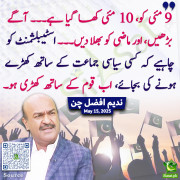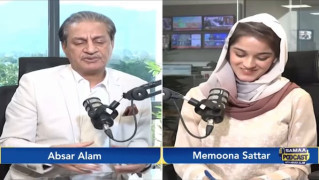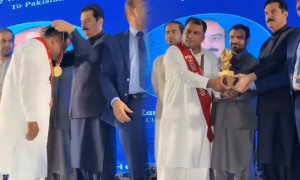wez4all
MPA (400+ posts)
I find this analysis very interesting as it tells us the difference between the last two IRI surveys (september 12 & feb 12) and according to this analysis PTI has actually gain more strength in traditional voters of all status quo parties.

Article:
There has been a lot of snivelling on the media about the recent IRI Survey which showed PTIs popularity going down by some margin (10%). The so-called analysts and experts have been banging their heads trying to prove that the tsunami is reverting and PTI has lost its credibility in the eyes of nation in general. I heard Mr Khan in an interview where he accepted that there has been a rise in uncertainty about PTIs stand, and people have started falling under undecided category (not joining any other party), this, according to him, will change as soon as the intra-party elections are completed and the nominated candidates start their door-to-door campaign. I salute Khan for becoming the first leader in recent history of Pakistan to accept his shortfalls and shortcomings instead of chanting you cant trust surveys. This is the only thing which allows him to correct himself and put more efforts and work hard.
Back to the survey, being from Pakistan, knowing their nature, and being an analyst myself, I could not understand this sudden surge of indecisiveness within my nation. Pakistani people tend to stay with their decision of supporting someone for a very long time (example Bhutto, Nawaz, Altaf etc.) even when they know they are being slaughtered in the name of their leader (irrespective of him being physically or mentally deceased).
This forced me to do a little analysis of my own. I will try to keep it as simple as possible, and will not indulge in jargons or technical details so that everyone can understand. I found interesting comparative discrepancies in the demography (see table) between the IRI survey of September and February 2012 respectively.

The table shows that the number of female respondents has reduced by 300 (5%) and the number of males has increased by the same number in the new survey. It is an already established fact that female population of Pakistan majorly supports Khan so obviously reducing female respondents and increasing males will drop the percentage of popularity for IK and PTI. Possible shift of opinion here due to sample group: 10%.
Respondents from age group below 25 have been reduced by 3% (180), these are also considered to be mostly supporting Khan and his party. On the other hand, there has been a 2% increase (120) in the respondents of age group 41-50. These are old people who have developed habit of either supporting old parties, or staying neutral for many decades. Furthermore, there is 1% increase (60) in respondents over 50. Those are certainly against PTI as a new party. Possible shift of opinion here due to sample group: 6%
Additionally, there has been a massive difference (14% or 840 people) in respondents belonging to households with monthly income of 25k to 50k. Knowing the financial statistics of Pakistan, this group falls under middle-class and upper-middle-class category and is mostly in favour of PTI. The increase in respondents belonging to group with household earning below 10k is 11% (660 people), and for less than 15k is 7% (420 people), which mostly represent people living on lower end of financial status (haree, kissan, mazdoor, mulazmat paisha, etc.). This class lives in dire situations and will mostly say I dont know (due to many reasons) and move on when asked about who they are going to vote, providing researcher or data collector an opportunity to place them under undecided category. Possible shift of opinion here due to this sample group: 32%.
Based on the differences in demographic representation of both samples, it can be said that the conclusions provided by IRI for September should not be compared with the prior poll and should be taken in isolation. Altogether, the selection of demographic representation shows a combined possible shift of opinion reaching 48% which, in the field of analytical research, is considered to be a massive difference.
I do not have the information whether this difference was intentional or unintentional, and were the data collectors manipulated to gather information from certain areas or sample sets (highly possible), but one thing I can state with certainty. This new IRI survey does not show fall of ratings for PTI or reversion of tsunami due to comparatively different from previous one. On the other hand, it does show clearly that even if the respondents demography is changed and possible opinion shift is pushed to 48%, PML(N), PPP, ANP, MQM and all other parties do not show any improvement in their popularity. This should be a matter of concern for these parties.
Finally, I would suggest PTI to first, work on the people representing lower-middle and poor class generating awareness in them about the importance of upcoming elections. These people have to play their part in the elections for PTI to sweep. If these people are overlooked, or left for longer time, there might be a chance of losing rural constituencies. Secondly, intra-party elections need to be held as quickly as possible, they will play a vital role in giving confidence to possible candidates, providing them motivation to meet people face-to-face with certainty. Thirdly, take media anchors and newspapers aggressively, put them on the defensive, blame them, make them ask the same questions to other party representatives, force your view that you are planning and will do when a chance is given, but scrutiny should be harsher for other parties of what they have done after getting the chance?
There is no equal opportunity option for PTI, they have to learn the tricks of trade, and have to take the fight in their opponents home ground, destroying their comfort zone would expose them and PTI will see the rewards of it.
Writer is a Lecturer, Systems Analyst, and Management Consultant

Article:
There has been a lot of snivelling on the media about the recent IRI Survey which showed PTIs popularity going down by some margin (10%). The so-called analysts and experts have been banging their heads trying to prove that the tsunami is reverting and PTI has lost its credibility in the eyes of nation in general. I heard Mr Khan in an interview where he accepted that there has been a rise in uncertainty about PTIs stand, and people have started falling under undecided category (not joining any other party), this, according to him, will change as soon as the intra-party elections are completed and the nominated candidates start their door-to-door campaign. I salute Khan for becoming the first leader in recent history of Pakistan to accept his shortfalls and shortcomings instead of chanting you cant trust surveys. This is the only thing which allows him to correct himself and put more efforts and work hard.
Back to the survey, being from Pakistan, knowing their nature, and being an analyst myself, I could not understand this sudden surge of indecisiveness within my nation. Pakistani people tend to stay with their decision of supporting someone for a very long time (example Bhutto, Nawaz, Altaf etc.) even when they know they are being slaughtered in the name of their leader (irrespective of him being physically or mentally deceased).
This forced me to do a little analysis of my own. I will try to keep it as simple as possible, and will not indulge in jargons or technical details so that everyone can understand. I found interesting comparative discrepancies in the demography (see table) between the IRI survey of September and February 2012 respectively.

The table shows that the number of female respondents has reduced by 300 (5%) and the number of males has increased by the same number in the new survey. It is an already established fact that female population of Pakistan majorly supports Khan so obviously reducing female respondents and increasing males will drop the percentage of popularity for IK and PTI. Possible shift of opinion here due to sample group: 10%.
Respondents from age group below 25 have been reduced by 3% (180), these are also considered to be mostly supporting Khan and his party. On the other hand, there has been a 2% increase (120) in the respondents of age group 41-50. These are old people who have developed habit of either supporting old parties, or staying neutral for many decades. Furthermore, there is 1% increase (60) in respondents over 50. Those are certainly against PTI as a new party. Possible shift of opinion here due to sample group: 6%
Additionally, there has been a massive difference (14% or 840 people) in respondents belonging to households with monthly income of 25k to 50k. Knowing the financial statistics of Pakistan, this group falls under middle-class and upper-middle-class category and is mostly in favour of PTI. The increase in respondents belonging to group with household earning below 10k is 11% (660 people), and for less than 15k is 7% (420 people), which mostly represent people living on lower end of financial status (haree, kissan, mazdoor, mulazmat paisha, etc.). This class lives in dire situations and will mostly say I dont know (due to many reasons) and move on when asked about who they are going to vote, providing researcher or data collector an opportunity to place them under undecided category. Possible shift of opinion here due to this sample group: 32%.
Based on the differences in demographic representation of both samples, it can be said that the conclusions provided by IRI for September should not be compared with the prior poll and should be taken in isolation. Altogether, the selection of demographic representation shows a combined possible shift of opinion reaching 48% which, in the field of analytical research, is considered to be a massive difference.
I do not have the information whether this difference was intentional or unintentional, and were the data collectors manipulated to gather information from certain areas or sample sets (highly possible), but one thing I can state with certainty. This new IRI survey does not show fall of ratings for PTI or reversion of tsunami due to comparatively different from previous one. On the other hand, it does show clearly that even if the respondents demography is changed and possible opinion shift is pushed to 48%, PML(N), PPP, ANP, MQM and all other parties do not show any improvement in their popularity. This should be a matter of concern for these parties.
Finally, I would suggest PTI to first, work on the people representing lower-middle and poor class generating awareness in them about the importance of upcoming elections. These people have to play their part in the elections for PTI to sweep. If these people are overlooked, or left for longer time, there might be a chance of losing rural constituencies. Secondly, intra-party elections need to be held as quickly as possible, they will play a vital role in giving confidence to possible candidates, providing them motivation to meet people face-to-face with certainty. Thirdly, take media anchors and newspapers aggressively, put them on the defensive, blame them, make them ask the same questions to other party representatives, force your view that you are planning and will do when a chance is given, but scrutiny should be harsher for other parties of what they have done after getting the chance?
There is no equal opportunity option for PTI, they have to learn the tricks of trade, and have to take the fight in their opponents home ground, destroying their comfort zone would expose them and PTI will see the rewards of it.
Writer is a Lecturer, Systems Analyst, and Management Consultant
Last edited by a moderator:
























